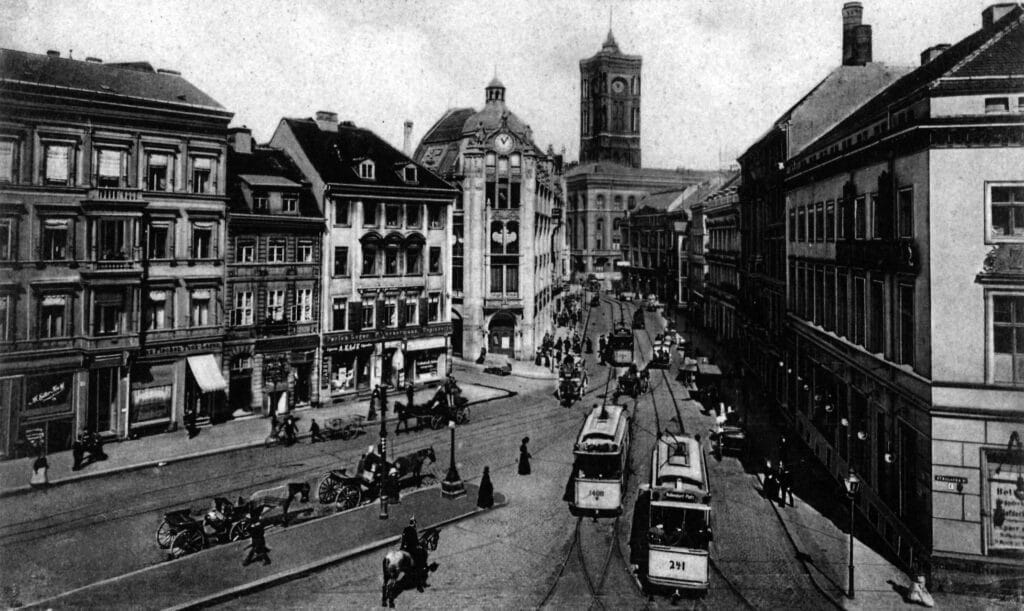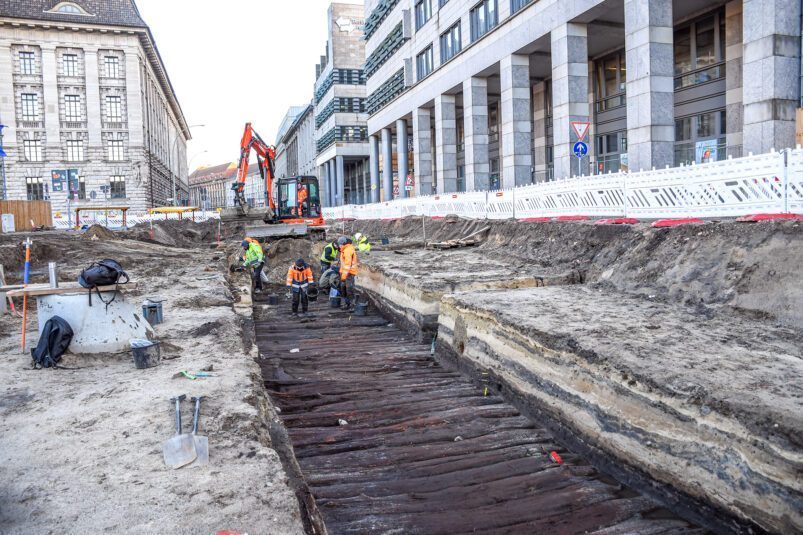What may well be Berlin’s oldest street has been uncovered by archaeologists from the State Monuments Office of Berlin. The discovery was made in January as part of ongoing excavations in and around the Molkenmarkt (“Whey Market”), Berlin’s oldest market square. Due to fortunate preservation conditions, the medieval plank walkway has remained in very good condition since its construction in the 13th century.
The plank embankment lies around 2.5m below the current road surface and is made of three layers of worked tree trunks that form an embankment 6m wide and at least 50m long. The raised walkway would have been built as a way to travel across particularly wet ground to the Mühlendamm and is likely one of the original streets from the founding of the city. Over the subsequent years, more and more streets were built on top of it, culminating in the modern day Stralauer Straße.
Whilst oak, pine, and birch does not usually survive in such good condition, damp ground and a large peat layer above the planks have sealed the wood from erosion and prevented natural decay over the last 700 years. Archaeologists suspect that the planks would have even been protected by a surface layer in the Middle Ages since there is no evidence of damage from wagon wheels or carriages.
The findings come as part of road redevelopment works on Stralauer Straße and the general Molkenmarket area, which have been ongoing since 2019. The excavations have already discovered features and objects from Berlin’s long history around the area of the Old Town Hall. Everyday items such as ceramics and animal bones have been found, as well as foundations of cellars and houses that have been demolished and built over throughout the centuries. Often these cellars are filled with rubbish from the 19th and 20th centuries, demonstrating how the new city has continued to develop above the old city.

The redevelopment of Stralauer Straße is part of large redevelopment plans that were passed in 2016, and also includes the construction of new utility lines, which will unfortunately lead to the destruction of the physical heritage in the ground. As a result, the archaeological excavations are deep and extensive, with estimates suggesting that around a fifth of the medieval city will be examined archaeologically, as well as more recent infrastructure such as a 19th century power station.
For those wishing to see the medieval wooden embankment in person, the State Monuments Office of Berlin will be offering tours once a week throughout 2022.
Read the statement in German from Landesdenkmalamt Berlin here, as well as for information on how to visit the excavations at the Molkenmarkt.

